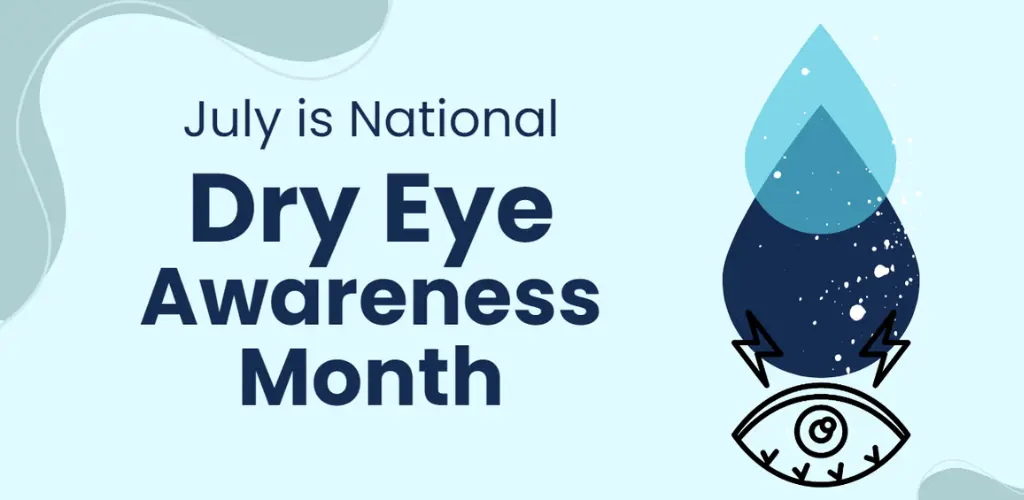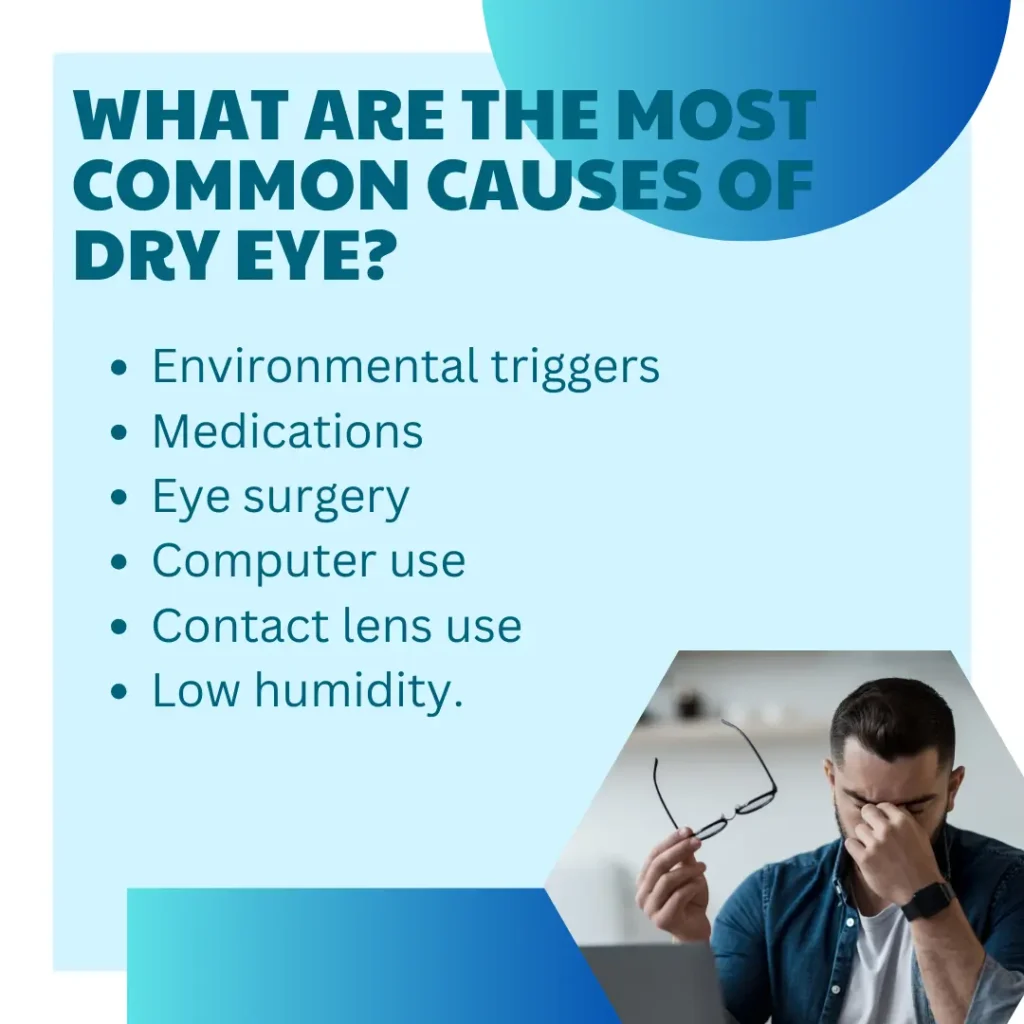Dry Eye Awareness Month: A Deep Dive into Understanding and Managing Dry Eye Disease
June 27, 2024
Introduction
Happy Dry Eye Awareness Month! This July, we focus on a common yet often misunderstood condition affecting millions worldwide—Dry Eye Disease (DED). This guide is designed to demystify DED, helping you understand its nuances, from its underlying causes to effective management strategies. Whether you’re directly affected or know someone who is, gaining insights into DED can significantly improve quality of life.
What is Dry Eye Disease?

Dry Eye Disease is a chronic condition where the eyes do not produce enough tears, or the tears are of poor quality and evaporate too quickly. This can lead to discomfort, visual disturbances, and, if not managed properly, more severe eye health issues. But why are tears so important? Tears are vital as they provide lubrication, supply nutrients, and remove irritants from the eyes, ensuring clear and comfortable vision.
Understanding the Vital Role of Tears
Tears are composed of water, oils, mucus, and antibodies. This complex mixture helps keep the eyes hydrated, nourished, and free from infection. When there’s an imbalance—whether due to insufficient tear production or poor tear quality—the symptoms of DED can emerge. These symptoms range from mild irritation to debilitating discomfort, affecting daily activities and overall quality of life.
The Prevalence of Dry Eye
Approximately 20 million Americans are estimated to suffer from DED, making it a significant public health concern. The condition spans across all age groups but is particularly prevalent among older adults and more frequently diagnosed in women. Despite its widespread impact, DED is often not talked about enough, leading to underdiagnosis and undertreatment.

Exploring the Different Forms of Dry Eye
DED can manifest in various forms, each requiring a specific approach to management:
- Evaporative Dry Eye: This is the most common type and occurs when there is insufficient oil in the tears due to Meibomian Gland Dysfunction (MGD). This dysfunction leads to faster evaporation of tears, leaving the eyes dry and irritated.
- Aqueous Deficient Dry Eye: In this form, the lacrimal glands fail to produce enough watery component of tears, leading to inadequate hydration of the eyes.
Demodex Blepharitis: A specific but less common type involving an infestation of Demodex mites on the eyelashes. These mites cause inflammation that can exacerbate or contribute to the symptoms of dry eye
What Triggers Dry Eye Disease?

Several factors can initiate or exacerbate DED:
- Environmental Conditions: Dry, windy, or smoky environments can accelerate tear evaporation, leading to dry eye symptoms.
- Lifestyle Factors: Excessive screen time and prolonged use of contact lenses can strain the eyes, contributing to tear film instability.
- Health-Related Factors: Hormonal changes, certain autoimmune diseases, and the effects of eye surgeries like LASIK can disrupt normal tear production.
- New Emerging Factors: Recent studies, particularly on lifestyle habits like vaping, have shown a correlation with increased symptoms of DED.
Recognizing the Symptoms of Dry Eye
Recognizing the symptoms of DED is crucial for early management:
- Irritation and Grittiness: Commonly described as a sensation of having sand in the eyes.
- Blurred or Fluctuating Vision: Often accompanied by a stinging or burning sensation.
- Increased Sensitivity to Light: This can make everyday environments uncomfortably bright or glaring.
Diagnosing Dry Eye Disease
Accurate diagnosis of DED involves several key assessments:
- Ocular Surface Disease Index (OSDI): This questionnaire helps gauge the severity of dry eye symptoms and their impact on daily activities.
- Schirmer’s Test: Measures the volume of tear production over a specific period.
- Tear Breakup Time (TBUT): Evaluates how quickly tears evaporate from the eye’s surface, indicating the stability of the tear film.
Comprehensive Treatment Strategies by Severity
Treatment for DED should be tailored to the severity of the condition, following the DEWS guidelines:
- Level 1 (Mild to Moderate): Simple changes such as adjusting the surrounding environment, dietary improvements to include more omega-rich foods, and basic eyelid hygiene can be effective.
- Level 2 (Moderate to Severe): More intensive therapies like prescription anti-inflammatory drops, advanced artificial tears, and eyelid cleaning techniques are recommended.
- Level 3 (Severe): This level may involve the use of prescription antibiotics, the insertion of punctal plugs to retain moisture, and specialized treatments for underlying inflammation.
- Level 4 (Extremely Severe): The most debilitating cases require systemic treatments, potential surgical interventions, and even the use of moisture-retaining goggles or devices.

Lifestyle Adjustments and Preventive Tips
Effective management of DED also involves preventive measures:
- Hydration and Humidity: Keeping well-hydrated and using humidifiers in dry indoor environments can help alleviate symptoms.
- Eye Protection: Wearing sunglasses or protective goggles in harsh weather conditions protects against environmental factors that exacerbate dry eye.
- Regular Screen Breaks: Taking regular breaks from screens to rest the eyes is essential, especially for those who work long hours in front of computers.
Conclusion
Observing Dry Eye Awareness Month is more than just a yearly reminder—it’s an opportunity to spread awareness about DED and encourage those affected to seek effective management strategies. Armed with this knowledge, you can better navigate the challenges of Dry Eye Disease, ensuring clearer vision and improved eye health. Here’s to taking steps toward better eye care and spreading the word about this prevalent condition!





